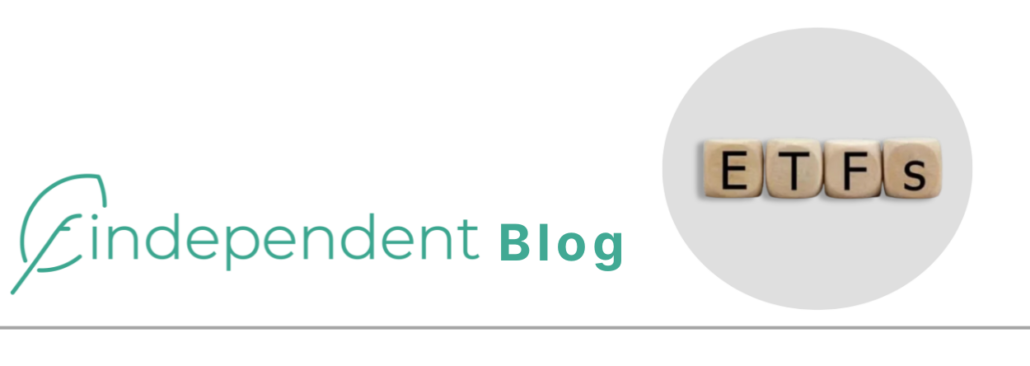
ETF savings plan – the easy way to build wealth
ETF savings plans are currently on everyone’s lips. According to a study by Blackrock, there were around 9.5 million ETF savings plans in Germany in 2024 and the topic is now also gaining momentum in Switzerland. This is encouraging, as ETFs are the cost-effective alternative to the well-known active funds offered by banks. As the fees are lower, ETFs keep more of the return in investors’ pockets on average.
In this article, we show you the different types of ETF savings plans available and what you should look out for when choosing one.
The content of this article
“Free” ETF savings plans
The so-called “free” ETF savings plans offered by many online brokers (such as Trade Republic, Scalable Capital in Germany or Saxo in Switzerland) are particularly popular. The term “free” means that customers do not pay any brokerage fees for the purchase of ETFs as part of the savings plan and the broker manages the custody account with the ETF shares without any additional fees.
However, this does not mean that brokers do not earn anything with these “free” ETF savings plans. As a rule, ETF providers (e.g. iShares, Vanguard…) pay brokers a listing fee so that they are included in the offering (or displayed more prominently); brokers also receive a certain percentage as reimbursement for every franc that flows into the ETF.
This remuneration can lead to a classic conflict of interest for the broker: Should the ETFs that are most attractive to customers be offered, or rather those where the ETF provider pays the most?
In addition to the compensation paid to ETF providers, brokers also receive commissions for routing stock market orders to certain exchanges. This practice is called “Payment for Order Flow” (PFOF). As it is questionable whether customers’ stock exchange orders are really executed at the best price if some exchanges pay for the order volume, the EU has decided to ban PFOF. The ban must be implemented in all EU countries from mid-2026.
ETF investment solutions as alternatives to savings plans
In addition to ETF savings plans, ETF investment solutions are an ideal solution for regular asset accumulation. ETF investment solutions consist of a combination of different ETFs. In addition to equities, investments are often made in bond, property and gold ETFs. Thanks to this diversification across different asset classes, the risk diversification is better than with a pure equity ETF. In addition, individual regions are often mapped with specific ETFs on the equity side. This can reduce product costs and provides customisation options.
ETF investment solutions are usually offered by digital asset managers. You can find out the difference between asset managers and brokers below.
The provider of the ETF investment solutions will compile and select the various ETFs for you. This means that you do not have to deal with the ETFs and their selection yourself, but can rely on the expertise of the asset manager. In addition, the asset manager continuously monitors your investment solution and the financial markets and makes adjustments if necessary.For its service, the asset manager charges a fee as a percentage of the investment amount. As fees have a major influence on how much return you get in the long term, you should make sure that you don’t pay more than 0.5% of the investment amount per year. This corresponds to CHF 5 per CHF 1,000 invested annually.
The asset manager’s fee usually also includes an e-tax certificate (costs extra with many brokers) as well as advice via e-mail, chat and telephone. Some asset managers also offer free (online)calls.
An ETF investment solution with an asset manager is therefore effectively an ETF savings plan plus:
- Combination of ETFs (put together by the asset manager)
- Ongoing monitoring of the financial markets
- E-tax statement for automated recording in the tax return
- Advice and online meetings
Broker vs. wealth manager
To make an informed decision, it is also worth taking a brief look at the companies behind the ETF savings plans (brokers) and ETF investment solutions (asset managers). The business models differ significantly.
Broker
A broker earns money when customers trade. It is therefore more important to him that you trade a lot and not that you really build up assets.
Wealth manager
The wealth manager’s remuneration depends on the client’s investment amount. It is therefore important to him that your assets grow as much as possible.
Are you interested in the topic in more depth? Then we have prepared a detailed description of the distinction between brokers and asset managers for you here.
Flipping stocks makes for empty pockets
An old German proverb says “Hin und Her macht Taschen leer”. It basically means, that frequent buying and selling has a negative impact on returns, as shown by various widely recognised studies, e.g. Barber/Odean (JoF, 2000).
There it is shown that private investors who hold shares directly pay an enormous performance loss for active trading. Out of 66,465 accounts with a large broker between 1991 and 1996, the private investors who traded the most realised an annual return of 11.4%, while the market returned 17.9%. Overconfidence may explain the high trading volumes and the resulting poor performance of individual investors. The central message of the study is that constant trading poses a threat to wealth.
Conclusion: Which is the best solution for whom?
“Free” ETF savings plans with a broker could be right for you if:
- you have read up on ETFs and know exactly which ETF you want to save in
- you would also like to invest in a few individual shares in addition to ETFs
- you are interested in the financial markets, follow developments and are constantly learning more about investing.
- you invest independently in a disciplined manner and do not fall for the lure of expensive financial products offered by brokers
ETF investment solutions with an asset manager are right for you if:
- if you are looking for a convenient solution without having to take care of ETF selection and trading yourself
- if you want to invest in a relaxed manner without having to follow the daily events on the financial markets
- if you value professional guidance and relevant information instead of being bombarded with “hot” tips or adverts for expensive financial products
- if you are looking for a partner who will support you in building up your wealth and will also help you through turbulent times on the financial markets
What you should look out for
If an ETF investment solution is the right solution for you, you should pay attention to the following when choosing a provider:
- Low, transparent fees (should not be more than 0.5% per year)
- understandable, user-friendly product (it’s also best to check ratings in the app stores, on Google and on Trustpilot)
- fast, personal support if you have a question
The convenient investment solution
You have all this and much more with findependent . Our investment app for everyone is already used and appreciated by almost 25,000 customers.
Ps: We don’t charge you any fees on your first 2,000 francs with findependent – unlimited in time. So you can try us out at your leisure and continue to save on fees later on.
If you want to know how you can invest your savings wisely in ETFs at findependent on a monthly basis, we have summarised the most important tips for beginners and created a guide to investing. We also explain what you can do to combat the devaluation of your savings (as a result of inflation). This is because interest rates on savings accounts will remain low for even longer.



























